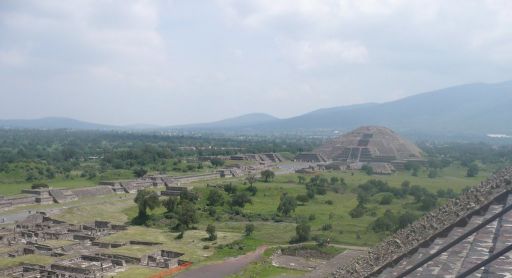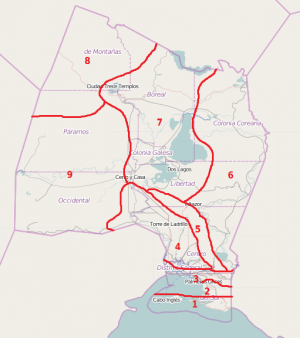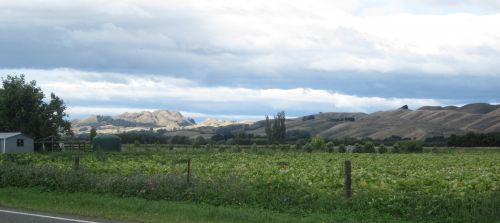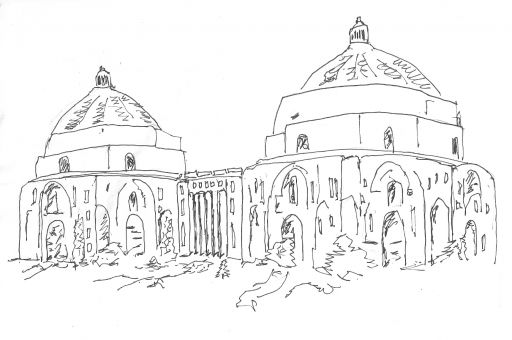Welcome to the geofictician wiki.
Ardisphere
| Template:Coordslink | |||||
| Ardispheric Federation Federación Ardesférica | |||||
|---|---|---|---|---|---|
| |||||
| Motto: "Soberanía, Autonomía, Hermandad" Sovereignty, Autonomy, Brotherhood | |||||
| Anthem: Mi Ardesfera Querido (My Beloved Ardisphere) | |||||
| Capital and largest city | Villa Constitución, DF | ||||
| Official languages | Castellanese | ||||
| • National languages | Cambric, Gohangukian, | ||||
| • Regional languages | Ingerish, Franquese, Altazorian, Bofobundan, Mahhalian, Karolian Románš, Vizcayan | ||||
| Demonym | Ardispherian | ||||
| Government | Federal Presidential Republic | ||||
| • President | Montserrat Nowak de Chang | ||||
| • Prime Minister | Eusebio Pérez | ||||
| • Foreign Minister | Luciano Vías Memmegehha | ||||
| Legislature | Federal Congress (Congreso Federal) | ||||
| • Upper house | Senate (Senado) | ||||
| • Lower house | Assembly (Asamblea) | ||||
| HDI | Template:Increase 0.85 Template:Color | ||||
| Currency | Ardispherian Peso Peso Ardesférico ($Ar) Template:ArdispherePesoRotating (Template:Code) | ||||
| Drives on the | right | ||||
| Internet TLD | .fa | ||||
The Ardispheric Federation, (Castellanese La Federación Ardesférica; Gohangukian 화구연방 [hwa-gu-yeon-bang] (hanja 火球聯邦); Cambric Yr Ardesffêr), also called informally "The Ardisphere" (Castellanese "El Ardesfera"; Gohangukian "화국" [hwa-guk]; hanja "火國") is a nation located on the Gwynian subcontinent on the northern part of the continent of Archanta. Its capital and by far largest city is Villa Constitución, whose metropolitan area includes nearly half the country's population, while other major metropolitan areas with more than 100,000 inhabitants include (in descending order by size of population) Cerro y Casa and environs, Jeongto (정토시) along with the northern Marverde region, Comala and Utopía region, El Cabo, Dos Lagos and Ynys Dieithriaid (northern Lago Libertad region), Ciudad Trece Templos, Altazor, and Lagartópolis (Témisa تَمِسا).
Etymology
There is no consensus on the origin of the name of the country. At some point, some native name or phrase heard by the first Castellanese colonists in the late 1500s or early 1600 was reinterpreted as "Arde-Esfera" (burns-sphere i.e. "burning sphere") - not really grammatical but somehow viewed as a reference to the common sun-themed iconography of many native Altazorian religious sites.
One suggestion that is popular among linguists is that in fact it was the Altazorian phrase "alde sifira" which means, roughly, "Don't come here," which may have been uttered by an Altazorian chieftan while gesturing at icons of their sun-god and protector. The early Castellanese would have assumed that the natives were pointing to the icons and giving a name, and the similarity between the sound of their phrase and something meaningful in the Castellanese language that matched the image they were seeing meant that the linguistic association became locked in. If this is in fact the origin of the name of the country, there is a great deal of irony that it became a country made up largely of immigrants. Nowadays, however, even the Altazorians call the country "Ardesfari" in their own language, and any semantic relation to a possible Altazorian linguistic origin is not something they are conscious of.
History
- Main article: History of the Ardisphere
- See also the list of National Historic Sites in the Ardisphere
Pre-Colonial Period
Ardisphere's pre-Colonial period can be clearly demarcated into 4 phases: 1) Paleolithic (before 600 AD); 2) the Tlön Civilization (600-1200); 3) the Albalonga and Buyambá Cultural Complex (1200-1400); and 4) the Altazorian Tributate (1400-1600).
In the paleolithic there were different groups and tribes settled throughtout the territory that is the modern country, obviously the lack of records makes it difficult to clarify how many different cultural and linguistic groups there were.

Based on later developments, the linguistic map for the pre-historic period can be divided into about three bands stretched horizontially across the country. The northernmost, overlapping with neighboring countries, were the Caruquian peoples (named for their modern descendents, called the Caruque, clustered in the Lower Yeonggwang Valley in the Colonia Coreana, formerly much more extended. The middle band were the Lonica peoples, of which the Tlön where the most notable members. To the south, including the Costa de Dragones and the Bahía Negra, were the various Albalongan peoples, which includes those who later became the Altazorians.
The Tlön Civilization was focused on a city that grew up on the west bank of the Río Albañiles in the 500s and 600s AD. It was quite large, and the monuments and zigurats that survive as ruins today are the most substantial architecture from the period. Tlonian control never seemed to have reached the coast, but there is evidence that their trading networks extended quite far, including Tlönian artifacts having been found as far away as Commonia and Karolia. It is not clear what caused the downfall of the Tlön, but current hypotheses include exhaustion of agricultural lands due to poor practices and the idea that there was a gradual drying of the regional climate, lowering the upper Albañiles Valley's carrying capacity.
The inheritors of the Tlönian civilization were the Albalongan groups settled around the Costa de Dragones (at that time, historically, a vast inland sea and saltmarsh wetland), on various islands in the sea and points around the perimeter. Albalonga was never a civilization or empire as such, but rather a collection of city states, that surrounded the Costa de Dragones and extended up the Río Hierro and Rio Albañiles as far as the great lakes regions, thus encompassing most of the modern Ardisphere and parts to the west.
The two great archeological sites associated with Albalonga are the place that is called Albalonga proper, which is a small, walled town which now sits right in the middle of the capital city just west of downtown, punctuating the city's skyline of highrises with its ancient profile, a living archeological site with the many layers of Albalongan, Altazorian, Castellanese and modern Ardispherian structures - continuously occupied for over 1000 years now. The other major site is Buyambá, about 100 km north of Albalonga on what at that time was an island in the Costa de Dragones near the modern town of Fuerte Cuadrado. Buyambá was not a town, as such, but a sacred site shared by surrouding peoples, who would travel there for important religious events. The zigurat there is not as large as those at Tlön or some other locations, but it is by far the best preserved, and the local First Peoples still actively use the site for their traditional ceremonies. It is notably not a restoration but rather a continuously maintained site, unlike any other site of such age in the region.
The Altazorians were in fact part of the Albalongan complex, a sort of Albalongan cultural outpost place to the north of the Sierra de los Cientoocho. As the Albalongan cities and towns fell into a never-ending cycle of civil war and retributive genocide, the Altazorians proved to be the only group with sufficient military force and cultural impetus to be able to bring the other towns and groups into line, and thus the Albalongan city states evolved into the Tributate, a more-or-less feudal arrangement where the various towns in the region owed their protection to Altazor, which became the heart of a sort of mercantile empire sometimes called the "Pax Altazoriana," much larger than the modern Ardisphere.
Unfortunately, the Albalongan groups on the coast resented the imperialisms of the interior, and by around 1500 AD the region once again descended into chaotic and genocidal civil war. This was unfortunate, because as the colonialists from Ingerland and Castellán arrived in the first decades of that century, they found a country decimated, lacking both in people and in resources. The Castellanese walked into the fortified town of Albalonga, finding it abandoned, and within 30 years they controlled the entire region south of the Sierra de los Cientoocho, with almost no military effort.
The Altazorians remained a power beyond the mountains for another 100 years or so, but by the 1640s Altazor itself had fallen to the Castellanese, and it evolved into the unusual combination of colonial and pre-colonial culture that it remains today, still called by many Ardispherians the "El Imperio Interior" - the interior empire.
Colonial Period - 16th through 18th Centuries
- See also: Colonial Governors of Nuevo Castellán
... more coming someday! ...
Independence and 19th Century
- See also: Ardispherian Civil War
... more coming someday! ...
20th Century
... more coming someday! ...
21st Century
... more coming someday! ...
Geography
Physical Regions
Despite being a fairly small country, the Ardisphere has a very diverse physical geography due to the variegated topography (from coastal plains to 5000 m mountains), as well as the remarkable differential in precipitation between the western and eastern parts of the country. The western third of the country is near desert (with less than 10 cm of precipitation annually at Bellas Aguas or Comala, for example), while the eastern third is quite wet (with over a meter of precipitation annually at both Puerto Desolado in the far southeast and at Yeonggwang in the far northeast). The middle third is a transition from these two extremes.
There are 9 geographic regions in the country. They are, in roughly counterclockwise order around the country, starting from the south (see map at left):
- 1 The coastal ranges and islands of the south
- 2 The Au River valley and delta
- 3 The Bahía Negra hills
- 4 The "Costa de Dragones" - a vast inland delta plain
- 5 The high mountains of the Sierra de los Cientoocho
- 6 The hill country of the east and northeast
- 7 The north central great lakes region (Lago Libertad, Marverde, Lago Moyica, Lago Trece Templos)
- 8 The northwest altiplano
- 9 The western canyonlands (including several isolated volcanic peaks, such as Volcán de Guerra)
Climate
... more coming someday! ...
Political Divisions
Federal Subjects
multipmap was broken
The Ardisphere is divided into ten first-level divisions, called sujetos federales ("federal subjects"). In fact they are mostly called departamentos ("departments"), but the two autonomous cultural regions are called colonias ("colonies", but the meaning is that they have more autonomy, not that they are literally colonies), and the capital area was split off due to its high population and made into the distrito federal ("federal district").
Each federal subject has a great deal of latitude in how much political control can be devolved to its parts. Thus the Colonia Coreana, for example, is highly centralized and the counties serve mostly census and statistical functions, while in the Departamento del Sur, as a counter-example, each county has its own legislature and a great deal of autonomy from the departmental government, to such an extent that the departmental government has very limited powers - essentially it is a federation of counties within the larger national federation. For more information on how each federal subject is structured and governed, see the individual article related to that federal subject, linked in the table below of the 10 first-level political divisions.
Comunas, Siroedd, 군, Zonas, Delegaciones
multipmap was broken
Each of the federal subjects have second-level divisions, which function as counties, with diverse local government functions that vary from region to region. In the 7 federal subjects called departamento, the second-level divisions are called comuna ("comune"). In the Colonia Coreana, the divisions are called gun (군 = "county"). In the Colonia Galesa the divisions are called sir ("shire"). In the Distrito Federal, there are two administrative zonas ("zones") along with the city of Villa Constitución, which is subdivided into 17 delegaciones ("boroughs"), which have many county-like functions, including borough legislatures.
For a complete listing of the first and second level divisions of the country, see the Political Divisions of the Ardisphere. For a complete listing of all communities (cities, town, villages, hamlets and other census-designated places), see the "List of Places" links for each of the individual federal subjects in the table above.
Major Cities
Most Ardispherians are urbanites, and more than half the country's population is concentrated in the sprawling metropolis centered on the capital, a modern and significant global city. The remainder of the population is found in the dozen or so other important cities, but even the largest, Cerro y Casa, is less than a tenth the size of the capital.
... more coming someday! ...
Politics and Government
... more coming someday! ...
Congress
The Federal Congress has two branches. The "lower house" is the National Assembly, while the "upper house" is the Senate. Like the president, members are elected by popular vote on party lists, but with respect to the Senate proportionality formulas are subsequently applied.
National Assembly
Since the Ardisphere has a hybrid parliamentary/presidential system, the Prime Minister is a sitting member of the National Assembly, but unlike most parliamentary systems, the Prime Minister is chosen from the president's party even if that party is in minority in the Assembly. Thus minority governments are not uncommon, although they have become more rare in the modern era, as the parties have become fairly effective at coordinating local and presidential campaigns.
There are currently 270 members in the National Assembly, each elected by plurality from single-representative districts (ridings) allocated nationally by population. The district mapping and allocation is done by a non-partisan commission of judges, legally constrained by some definitions of compactness and continuity, including that each district (riding) must not divide lowest level administrative boundaries (towns and townships in most of the country, formally demarcated neighborhoods in major cities). Currently, there are about 65,000 residents in each district.
| 40o Congreso Ardesférico - Asamblea Nacional |
|---|

|
| Legend |
| Partido Ortólico Demócrata: 6 seats |
| Partido Federalista: 104 seats |
| Independientes: 12 seats |
| Partido Socialista: 123 seats |
| Partido Verdista: 25 seats |
Senate
The Senate is not particularly powerful, constitutionally - but, unlike the National Assembly, it is impossible for the Senate not to be majoritarily of the President's party. This is because the membership is allocated proportionally based on the presidential election voting share, but senators are also allocated regionally, so that each federal subject has exactly 5 senators. This grants disproportiate power in the federal system to the federal subjects with lower populations, such as Departamento de Montañas or Colonia Galesa. Membership is chosen from each party's slate in each federal subject, based on the that party's national and regional vote share, through a series of complicated formulas that ensure the right proportion while still equally representing each federal subject. Further, in the event of ties in the Senate, the President votes the tie-breaker.
The current membership of the Senate is 50, 5 for each federal subject.
| 40o Congreso Ardesférico - Senado Nacional |
|---|

|
| Legend |
| Partido Ortólico Demócrata: 2 seats |
| Partido Federalista: 9 seats |
| Partido Socialista: 26 seats |
| Partido Verdista: 12 seats |
| Partido Revolucionario: 1 seat |
... more coming someday! ...
Judiciary
... more coming someday! ...
- See also the list of Courts and Trial Venues in the Ardisphere
Presidency
... more coming someday! ...
- See also: the list of Presidents of the Ardisphere and Casa del Sol
Federalism
Principle of Autonomy
Local Government
Governors, County Executives and Mayors
Local Legislatures
- See also the list of Local Government Buildings in the Ardisphere
Foreign Relations
... more coming someday! ...
- See also: for an up-to-date list of embassies and consulates that the Ardisphere maintains in other countries, see Ardispherian Embassies. For a complete listing of diplomatic missions to the Ardisphere (mostly located in Villa Constitucion), see Embassies in the Ardisphere.
Military and Police
- Main article: Guardia Civil (Ardisphere)
The Ardispherian military is unusually organized due to constitutional constraints. By the "pacifist" amendment passed under President Eva Shinoda, the Ardisphere is prohibited from maintaining an "adventurist military," but a combination of strong prior military traditions, along with willful political resistance over the years, has led to the country maintaining a de facto military that is on par with many similarly-sized countries, but euphemistically called the "Civil Guard" and legally characterized as a kind of police force.
In fact, because of the internationalist bent of recent administrations, in recent decades the Guardia Civil has seen more foreign deployments than at any other time in Ardispherian history, under the onus of Assembly of Nations peacekeeping missions.
- See also the list of Military Facilities in the Ardisphere
Aside from the federal police (a division of the Carabineros of the Guardia Civil), each federal subject has a police agency and prosecutors office. Although most major crime investigation and control is handled by the federal police, prosecution, conviction and detention for crimes are mostly handled by these subject agencies. Most major towns maintain jails and police agencies as well, athough, again, these agencies focus on noncriminal (civil code, e.g. parking and traffic, family courts, etc.) enforcement, and criminal prosecution and detention, rather than criminal control or investigation.
- See also the list of Prison Facilities in the Ardisphere
Economy
Business and Finance
... more coming someday! ...
- See also: Mercado de Valores de Villa Constitución, IBA-150, and the list of Countries with Free Trade Agreements with the Ardisphere.
Manufacturing and Energy
- See also the list of Electrical Generating Facilities in the Ardisphere.
Retailing and Service Sectors
- See also the list of Shopping Malls in the Ardisphere.
Agriculture
- See also the list of Food Processing Facilities in the Ardisphere.
Demographics
Language
Constitutionally, Castellanese (Castellanés) is the only official language at the national level. However, the constitution provides that lower level political entities, including federal subjects, counties, and even cities may have their own official languages, and further provides that the federal government must provide services to any citizen in their preferred language. Because the Ardisphere is a country of mostly immigrants from all over the world, the federal translation agency is therefore kept quite busy.
Aside from the federally recognized Castellanese, regionally official and co-official languages (in descending order of number of speakers) include Gohangukian (about 10% nationally, sole official language in the Colonia Coreana), Ingerish (about 5% nationally, co-official in the Comuna de Islas in Departamento del Sur), Cambric (about 4% nationally, sole official language in the Colonia Galesa), Franquese (also about 4% nationally, co-official in the Comuna Moyica in Departamento Boreal), Mahhalian (about 3% nationally, co-official in the Comuna Peligro-Volquete in Departamento del Centro), Altazorian (about 3% nationally, co-official in many comunas of Departamento Libertad), Bofobundan (about 2% nationally, co-official in Comuna La Xurre of Departamento de Páramos), Karolian Románš (less than 1% nationally, but co-official in the Comuna Quiroga in Departamento del Sur), and Vizcayan (less than 1% nationally but co-official in Comuna Vizcaya in Departamento del Centro).
The Gohangukian language is a particularly prominent minority language due to the large autonomous Gohangukian-speaking Colonia Coreana, as well as the outsized cultural and political influence held by the group throughout the country's recent history. Most Ardispherians can read the Gohangukian glyphs at an elementary level even if they do not know the language well, and in recent decades many advertisers have adopted the language for its marketing cachet.
Nevertheless, Castellanese remains the dominant national language - both because of its cultural strengths and because even in the constitutionally mono-lingual colonias, the language is still required study for all years of primary and secondary education. Toleration for the use of other languages is high, however, and there are national-level media in all of the above-listed languages, and local media in numerous other languages can be found in immigrant neighborhoods and communities, especially in the multicultural and diverse city of Villa Constitución - it is said that every language in the world is spoken in some neighborhood in that city.
Religion
The Ardisphere is a religiously diverse country, and religion has played a significant role in its history and how its different social groups have defined themselves over the years.
The largest religion is Chogué (a Guatamic-based religion), with some 41% of the population claiming adherence. Although originally brought by Gohangukian immigrants, the religion has taken on a distinct Ardispherian character, and the national branch has been entirely independent of foreign connections or loyalties for over 100 years. Chogué long ago ceased to be associated specifically with the Gohangukian ethnic group, and current practitioners range across the ethnic spectrum of the county.
Ortholicism is the second largest religious grouping, at 22% of the population. A legacy of the colonial period, it was dominant until independence, but a "secularist" backlash against the church's abuse of power in the 1800s was partly why Chogué took root, as the "anti-religious" activism of that era was in fact only anti-Ortholic. Since the anti-Ortholic clause was removed from the constitution by ammendment in 1907, there has been some resurgence of Ortholicism, especially among immigrants who brought an Ortholic heritage with them.
Other religious groupings make up the remainder of the population, along with the growth in recent decades of those who prefer to call themselves non-religious - now over 20% of the population. In descending order of number of adherents, other religions with greater than 1% include Reformatist churches of various denominations (Metholic, Amicus, etc.), Derakassy, Hebralic, Cathodox churches, various types of Mametism including Bofobundan Mengzho, and Casa Búa.
- See also the list of Religious Buildings in the Ardisphere
Education
Primary and secondary education is universal and free. Literacy rates are very high. Public schools are operated by incorporated cities and towns, and sometimes by county (comuna) governments in rural areas. Elementary schools are called primarias, middle schools are called secundarias, and high schools are called liceos or colegios, and are often referred to as terciarias, which is confusing for Ingerish-speakers for whom tertiary education generally means university.
... more coming someday! ...
Primary and Secondary Education
... more coming someday! ...
Tertiary Education - Liceos and Colegios
... more coming someday! ...
Higher Education
... more coming someday! ...
- See also the list of Higher Education Institutions in the Ardisphere
Healthcare
- See also the list of Hospitals and Healthcare Facilities in the Ardisphere.
Transportation and Infrastructure
RUTA
RUTA (an acronym of the Castellanese "Red Unificada de Transportes Ardesfericos") is an agency of the Ardespherian transport ministry which functions to coordinate all public transportation networks and systems within the Federation. In fact, the agency does not operate any routes or infrastructure itself; instead, it serves to provide a regulatory framework and an informational clearinghouse for route and infrastructure operators, infrastructure projects and public-transport-oriented development throughout the country. It has also recently been proposed to grant to RUTA coordinating authority over the highway numbering and construction portfolios, which everyone agrees are currently a scandalous mess in the country.
Railways
... more coming someday! ...
Regional and Interregional Rail
... more coming someday! ...
Urban Rail
Urban rail infrastructure is well-developed in the country. There are commuter rail systems, subway systems (Metros), and tram and light rail systems.
Four Ardispherian cities have Metro systems. Jeongto and Cerro y Casa each have several lines, and Comala has a single line that suits its linear topography along the canyon. By far the most developed metro system, however, is in Villa Constitucion, with 13 lines under the MetroVC operating umbrella, which are supplemented by a fully integrated commuter rail system that allows for seamless transfer, such that effectively the 20 commuter lines also function as metro lines. Each metro system is part of a "RUTA region" (see above) which coordinates the various privately and publically owned rail systems. For example, the RUTA region for the capital area is generally called RUTA-VC.
Highways and Roads
The highway system in the Ardisphere is highly decentralized. Under the federal system, there are many types of highways: federal highways and regional highways, as well as many local highways, each funded and maintained separately. Whether a given road is under federal, regional or local funding has no bearing on the quality of road. There are stretches of federal routes in isolated, rural areas that are single-lane dirt tracks, and there are 10-lane limited-access freeways that are nothing more than city streets by classification (e.g. "Carretera Pistolas" in Villa Constitución).
The highway numbering scheme uses alphabetic prefixes to indicate classification. Any road with federal funding and mandate is classified "RN" ("Ruta Nacional," but when spelled out it is almost always "Ruta Federal"). However, these national-level routes are actually quite few, mostly serving as a kind of top level network for the country (e.g. RN 31 along the country's eastern border). Additionally, some federally-subsidized tollways are tagged with prefix "AP" (Autopista de Peaje), and non-tolled, limited-access extensions of such highways are sometimes tagged with the prefix "AC" (Autopista sin Cuota). These are frequently but unofficially unified under a single-letter rubric "A" (e.g. A 5 to the southeast of the capital). Most federal highways are one or two digits, although there are exceptions, such as RN 101 that runs up the east side of Marverde.
The majority of highways are built and maintained at the federal subject level, and the road prefixes are the same two-letter codes as used by other government agencies (i.e. the ten federal subjects: DF, DS, DC, DO, DP, DL, DB, DM, CG, CC) Most of these highways are 3 digits (e.g. DO 423). Local roads, if numbered, are generally assigned 4 digits with a county-code prefix (e.g. some highways in the upper Río de Lotos valley, such as JS 9242), but more commonly no number is given at all, only a descriptive name (e.g. "Camino Nuevo Lidgate - Quentín de Battista").
Effort is made by road-building agencies to make sure highway numbers are unique, but there are some cases where this is not successful, especially for local highways.
Culture
Literature
- Main article: Ardispherian Literature
... more coming someday! ...
Poesía Costense
- See also: Che Kim
Music
... more coming someday! ...
Cinema, Performing Arts and Media
... more coming someday! ...
Visual Arts and Architecture
... more coming someday! ...
Philosophy
... more coming someday! ...
Cuisine
- Main article: Food and Drink in the Ardisphere
... more coming someday! ...
Festivals and Holidays
Important Ardispherian holidays include the following.
- January 1 - New Years Day
- February 27 - Constitution Day
- March or April (varies by Lunar calendar) - Justo Espantoso (harvest festival)
- April or May (varies by Lunar calendar) - Gautama's Birthday
- June 22 - Winter Solstice
- August 14 - President Keum's Birthday
- September 15 - Independence Day
- November 3 - President Errazuriz's Birthday
- December 25 - Mesiamas
Sports
- Main article: Sports in the Ardisphere
The three most popular sports in the Ardisphere are cricket, football (soccer), and aldepaloti, a sport "native" to the country which is derived from a ball game practiced by the native Altazorians prior to colonization that resembles a cross between Lacrosse and rugby, and played on an adapted cricket pitch. Football is probably the most widely practiced and watched by fans, but cricket and aldepaloti are viewed as more distinctive to the national character.
Other popular sports include Basketball, Track and Field (atletismo [athletics]), and motorsports.
- See also the list of Sports Facilities in the Ardisphere.
National Parks and Historical Sites
- See also the list of National Historic Sites in the Ardisphere and the list of National Parks in the Ardisphere.
International Organizations
The Ardisphere is an active member of many international organzations, including being a charter member of the Assembly of Nations and the Commonwealth of Castilophone Countries.





